Carnegie Hall Bed and Breakfast, former Carnegie Library, Ladysmith, Wisconsin
Introduction
Author-Uploaded Audio
Listen to a narration of this entry's description by University of Wisconsin-Madison Information School LIS 602 Fall 2019.
Text-to-speech Audio
Images
Ladysmith Carnegie Library Exterior
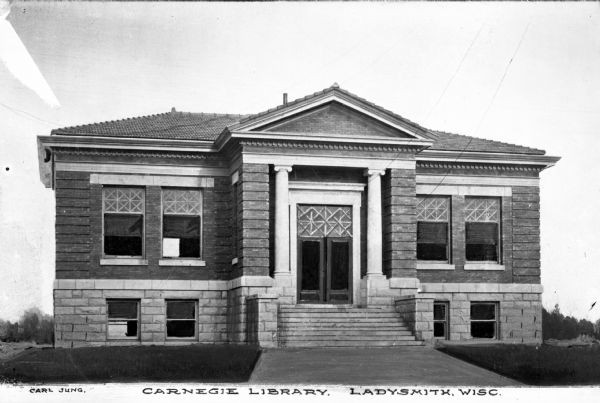
Nearby Chippewa Falls Carnegie Library
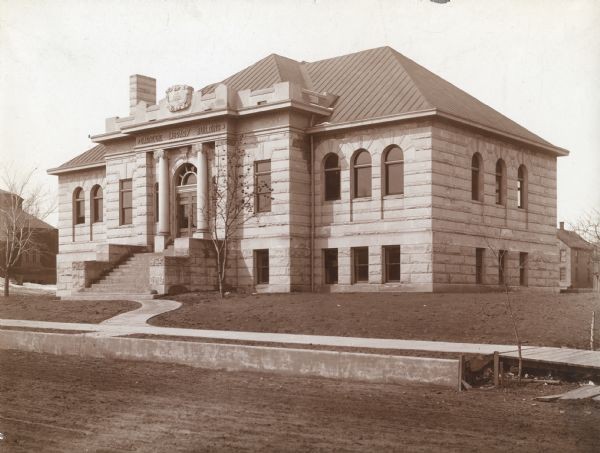
Carnegie Hall Bed and Breakfast Interior
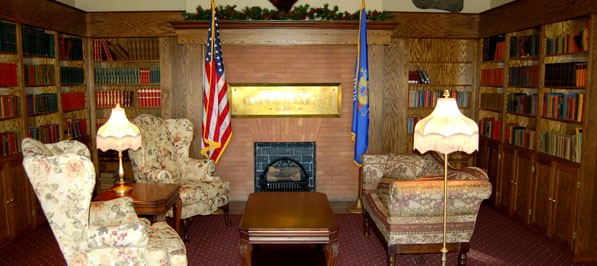
Flambeau River
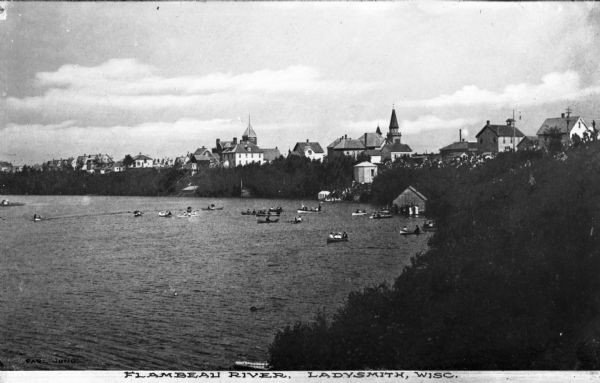
The interior of the Madison Wisconsin Public Library in 1905, funded by a Carnegie grant of $75,000.
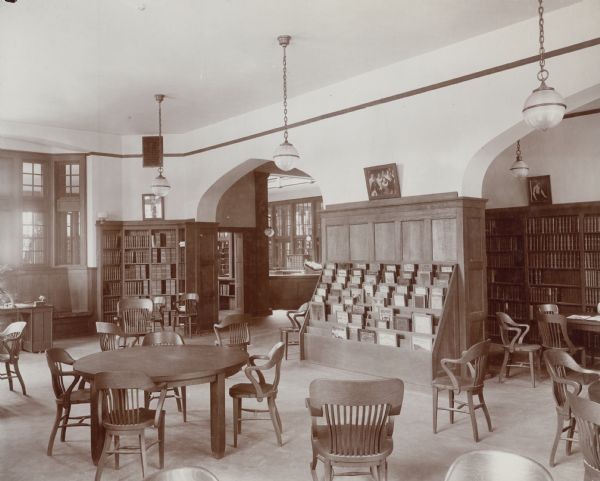
Rusk County Library, Ladysmith Wisconsin
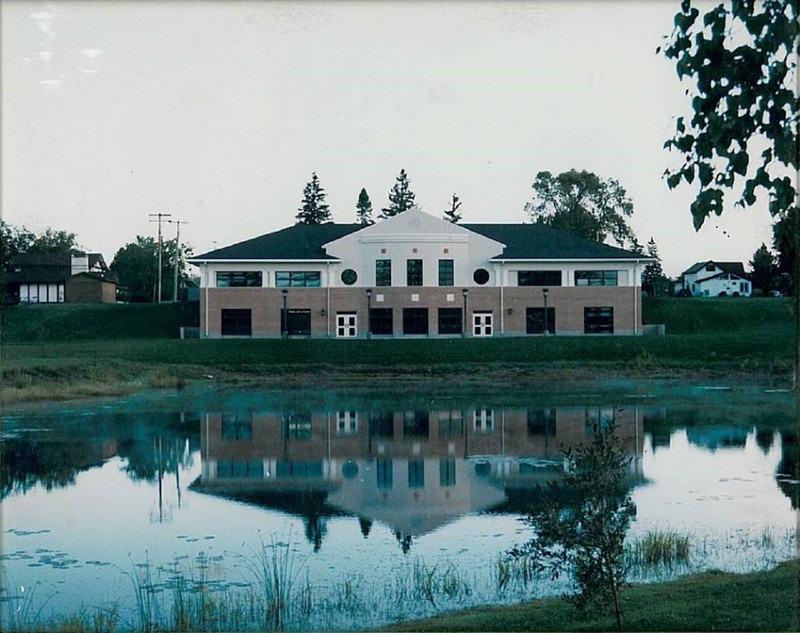
Backstory and Context
Author-Uploaded Audio
Listen to a narration of this entry's description by University of Wisconsin-Madison Information School LIS 602 Fall 2019.
Text-to-speech Audio
The early 20th century witnessed the foundation of 1,689 Carnegie libraries across the United States, 63 of which were established in the state of Wisconsin. These institutions–made possible through a series of grants donated by the steel magnate and philanthropist Andrew Carnegie–offered the benefits of a free public library for all. The Carnegie grants were especially important to small towns in Wisconsin such as Ladysmith that needed the financial boost to build and sustain a community library (see image 1).
Conditions for grant approval concentrated upon architectural design and obtaining matching investment funds from the communities. While a specific architectural style for the exterior of the new library buildings was not tied to the funding, Carnegie discouraged an interior design made popular in the 19th-century by architect Henry Hobson Richardson (Richardsonian Romanesque), which privileged alcoves and high ceilings that demanded ladders for book retrieval. Instead, Carnegie encouraged a progressive interior design that incorporated more open spaces, open stacks, reading rooms for adults and children, a staff room, and a centrally located librarian’s desk, all in support of the "public service" initiative (see image 5).
In 1907, through the efforts of W. T. Rooney, Ladysmith, Wisconsin received a $10,000 Carnegie grant to build its first library, which was to be situated along the banks of the Flambeau River (see image 4). In order to meet the second condition for grant approval, the city council had voted to provide $1000 annually for the maintenance and support of the new library. In 1997, after 90 years of serving the urban and rural populations of Rusk County, Wisconsin, the original Carnegie Library closed its doors to the public. Today the Ladysmith library retains most of its exterior design, boasting a neoclassical facade with white columns and a sign reading "Free Library." The interior maintains the openness of the original library, but has been heavily refurbished to suit the needs of its new function.
Other Carnegie Libraries in Wisconsin and across the US have met a similar fate, either being destroyed entirely or being repurposed after their communities outgrew them. The Chippewa Falls Carnegie Library, near Ladysmith, closed in 1969 and served as a junior high school band room (see image 2). In 1978 the junior high school no longer wanted the building and after two unsuccessful bids from local businesses, the wrecking ball fell. There are also former Carnegie Libraries that have been repurposed as historical societies, chambers of commerce, and academic administrative offices. Only two have chosen to reopen their doors and offer accommodation to their guests: The Old Library Inn in Sterling, Colorado and Carnegie Hall Bed and Breakfast, in Ladysmith, Wisconsin. After moving to its new location, the original Carnegie Ladysmith Library stood empty for two years before Marty and Pat Reynolds decided to buy it and remodel the building into a bed and breakfast.
In order to save the building from the wreckers, Wisconsin State Representative Marty Reynolds and his wife Pat bought the former Carnegie Library for a nominal $1.00 with the idea of turning it into a bed and breakfast. A 1999 interview with the Reynolds noted that they knew what they were getting into:
"We call this one the money pit."7
The Reynolds were not interested in making money, however, but rather in preserving an historic building that figured in both of their childhoods, as well as the collective memory of the community. Even before the Reynolds were born, the library had already established a legacy of priding itself as one of the best in terms of serving its rural populations. Ruth Wieber, librarian in 1947, noted that:
"I find that when I go to the librarians' meetings, the rural library service in Rusk county is well known and admired."8
Since the Reynolds bought the building, they have transformed it into a successful bed and breakfast. Since many of Ladysmith's original downtown buildings were constructed to face away from the Flambeau River, one of the first alterations was the addition on the back of the building with large windows and panoramic views for visitors. In order to keep the library theme, the Reynolds' interior designs include a reading room and book-lined walls (see image 3).
The library for Ladysmith was rebuilt and is now known as the Rusk County Community Library, situated a few blocks southwest of downtown Ladysmith (see image 6). The architectural design of the new building maintains a relationship to the nearby historic buildings. It provides 18,000 square feet of space, approximately five times larger than the original Carnegie Library, and has a lovely view of Corbett lake in Ladysmith, with windows and seating for patrons to enjoy. It is comforting to know that communities such as Ladysmith still care about the information contained in their historic buildings, as well as their information institutions, i.e. their libraries, and the need to adapt these institutions to serve both local communities and the ever-changing information landscape.
Sources
- Campbell, James M. Campbell: Carnegie Library Held Fond Memories for Many, The Chippewa Herald. August 15th 2011. Accessed December 3rd 2019. https://chippewa.com/lifestyles/campbell-carnegie-library-held-fond-memories-for-many/article_1ad1354c-c752-11e0-bfee-001cc4c002e0.html.
- Ladysmith, Wisconsin - A Brief History, Wisconsin Historical Society. Accessed December 2nd 2019. Viewed online https://www.wisconsinhistory.org/Records/Article/CS2492.
- Nix, Larry. Carnegie's Wisconsin Legacy - An Exhibit, Wisconsin Library Heritage Center. August 31st 2010. Accessed December 2nd 2019. Viewed online http://heritage.wisconsinlibraries.org/entry/carnegies_wisconsin_legacy_an.
- Pfister, Tom. When There's A New Chapter At Carnegie Public Library Buildings, Forbes. November 30th 2018. Accessed December 2nd 2019. Viewed online https://www.forbes.com/sites/tompfister/2018/11/30/when-theres-a-new-chapter-at-carnegie-public-library-buildings/#3c30adf92f5d.
- The People of Rusk County Wisconsin. Rusk County Historical Society, editor. 1983. History of Rusk County, Wisconsin, p. 38. Accessed December 2nd, 2019. Viewed online http://digital.library wisc.edu/1711.dl/WI.IHRuskCounty.
- Reynolds, Marty and Pat. Building History, Carnegie Hall Bed and Breakfast. Accessed December 2nd 2019. Viewed online http://www.carnegiehallbedandbreakfast.com/web/history.htm.
- Rusk County Community Library, City of Ladysmith, Wisconsin. Wisconsin Architect, vol. 69, no. 5. Published October 15th 1998.
- Lampert Smith, Susan. "Turning a Library into a B and B." Madison Wisconsin State Journal (Madison) October 31st 1999, 1C sec.
- Wieber, Ruth. "Report City and County Library." Bruce News (Bruce) March 25th 1948, pg. 11.
Wisconsin Historical Society, Carl Jung, Carnegie Library, Ladysmith, Wisconsin, IM79000. Viewed online at https://www.wisconsinhistory.org/Records/Image/IM79000.
Wisconsin Historical Society, Unknown photographer, Chippewa Falls Library, Location, IM63587. Viewed online at https://www.wisconsinhistory.org/Records/Image/IM63857.
Carnegie Hall Bed and Breakfast website. Viewed online http://www.carnegiehallbedandbreakfast.com/web/policies.htm.
Wisconsin Historical Society, Carl Jung, Flambeau River (Ladysmith), IM78992. Viewed online at https://www.wisconsinhistory.org/Records/Image/IM78992.
Wisconsin Historical Society, Unknown photographer, Madison Public Library, IM64622. Viewed online https://www.wisconsinhistory.org/Records/Image/IM64622.
Rusk County Library website. https://ruskcountywi.com/rusk-county-library/
